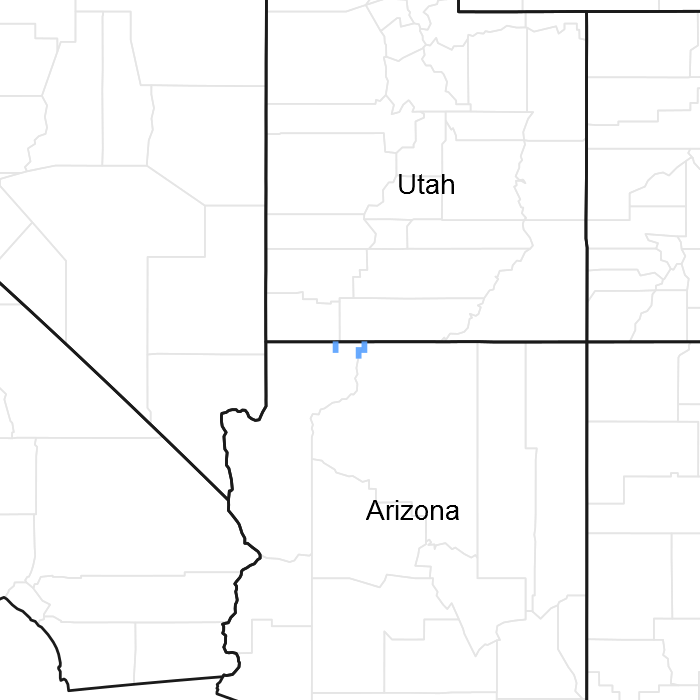
Natural Resources
Conservation Service
Ecological site R035XD410AZ
Saline Upland 7-11" p.z. Loamy
Last updated: 5/19/2025
Accessed: 12/21/2025
General information
Provisional. A provisional ecological site description has undergone quality control and quality assurance review. It contains a working state and transition model and enough information to identify the ecological site.

Figure 1. Mapped extent
Areas shown in blue indicate the maximum mapped extent of this ecological site. Other ecological sites likely occur within the highlighted areas. It is also possible for this ecological site to occur outside of highlighted areas if detailed soil survey has not been completed or recently updated.
MLRA notes
Major Land Resource Area (MLRA): 035X–Colorado Plateau
AZ CRA 35.4 – Colorado Plateau Cold Sagebrush – Grasslands
Elevations range from 4200 to 5100 feet and precipitation averages 7 to 11 inches. Vegetation includes winterfat, fourwing saltbush, buckwheat species, needlegrass, bottlebrush squirreltail, Indian ricegrass, black grama, blue grama, sideoats grama, gyp dropseed, and galleta. The soil temperature regime is mesic and the soil moisture regime is typic aridic. This unit occurs within the Colorado Plateau Physiographic Province and is characterized by a sequence of flat to gently dipping sedimentary rocks eroded into plateaus, valleys and deep canyons. Sedimentary rock classes dominate the plateau with volcanic fields occurring for the most part near its margin.
Ecological site concept
This site occurs in an upland position as entrenched alluvial fans and low stream terraces. Historically, this site was primarily bottoms and floodplains; but through deep gully erosion, they no longer benefit from excess run-in moisture. Elevation is 3,800 to 5,300 feet. Slope is 0 to 5 percent. Soils characterizing this site are deep and well-drained. Surface textures range from sandy to silty clay loam and subsurface textures range from sandy loam to silty clay loam. Salts are in the profile in varying amounts and conductivity ranges from 5 to 20 mmhos/cc. Reaction is slightly alkaline to strongly alkaline. This site is composed of grasses intermixed with shrubs. This plant community has the potential for a mixture of cool season and warm season species. Common plant species include fourwing saltbush, greasewood, saltgrass, and western wheatgrass. Plants most likely to increase on the site through disturbance are greasewood, saltgrass, and rabbitbrush. Annuals such as cheatgrass and Russian thistle will invade these areas.
Table 1. Dominant plant species
| Tree |
Not specified |
|---|---|
| Shrub |
(1) Atriplex canescens |
| Herbaceous |
(1) Pascopyrum smithii |
Click on box and path labels to scroll to the respective text.